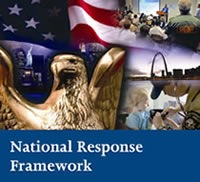Engaging the Public for a Better Security Process
 One of my main priorities for TSA in 2008 is to get passengers and TSA on the same side, working together toward a better security process for everyone. That’s why TSA has launched a blog called “Evolution of Security” to get a two-way conversation going between our workforce and the public. While I’ll still be posting here on TSA’s many transportation security initiatives, I invite you to check out www.tsa.gov/blog to interact with some TSA employees, learn about the innovations we have in the works for checkpoints, and give us your feedback. I wanted to share with Leadership Journal readers an excerpt of my initial Evolution of Security blog post:
One of my main priorities for TSA in 2008 is to get passengers and TSA on the same side, working together toward a better security process for everyone. That’s why TSA has launched a blog called “Evolution of Security” to get a two-way conversation going between our workforce and the public. While I’ll still be posting here on TSA’s many transportation security initiatives, I invite you to check out www.tsa.gov/blog to interact with some TSA employees, learn about the innovations we have in the works for checkpoints, and give us your feedback. I wanted to share with Leadership Journal readers an excerpt of my initial Evolution of Security blog post:Our ambition is to provide here a forum for a lively, open discussion of TSA issues. While I and senior leadership of TSA will participate in the discussion, we are turning the keyboard over to several hosts who represent what’s best about TSA (its people). Our hosts aren’t responsible for TSA’s policies, nor will they have to defend them -- their job is to engage with you straight-up and take it from there. Our hosts will have access to senior leadership but will have very few editorial constraints. Our postings from the public will be reviewed to remove the destructive but not touch the critical or cranky.
Please be patient and good-humored as we get underway. The opportunity is that we will incorporate what we learn in this forum in our checkpoint process evolution. We will not only give you straight answers to your questions but we will challenge you with new ideas and involve you in upcoming changes.
I encourage the readers of the Leadership Journal to visit our new blog and contribute to the conversation with TSA front line employees. This is your chance to let us know what you think, ask questions, and help us improve the screening process so it is more effective for everyone. Please stay tuned to this Journal as I will continue to be a major contributor.
Kip Hawley
Labels: About the Department, travel security, TSA












